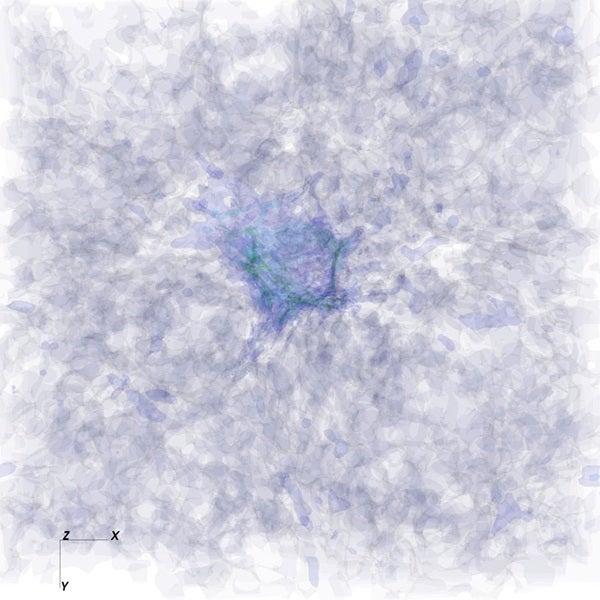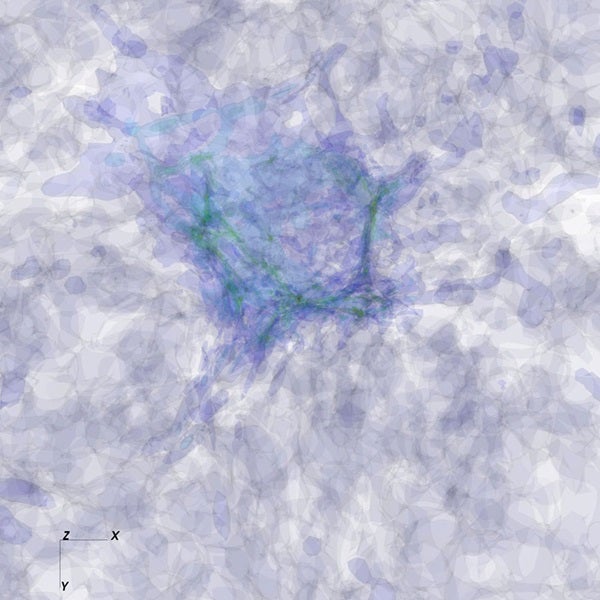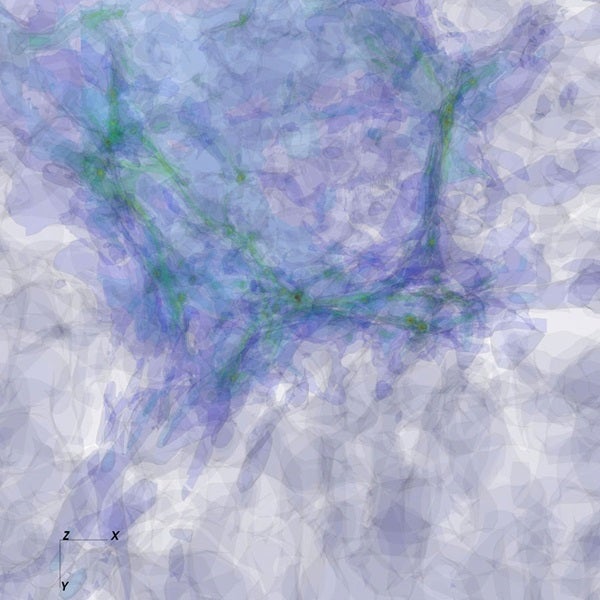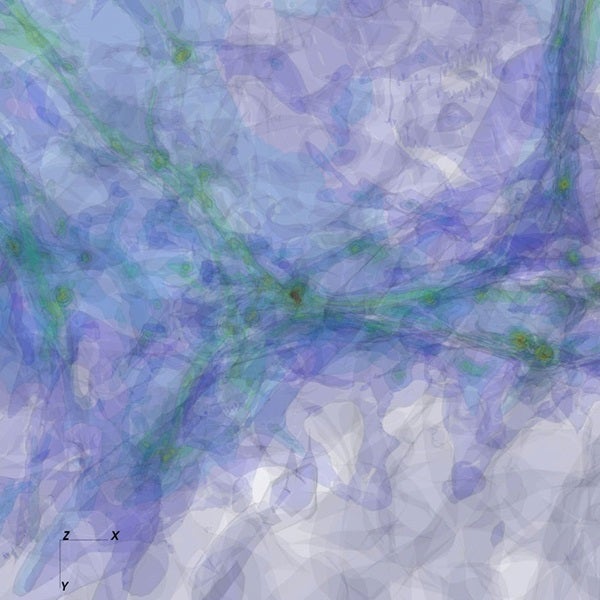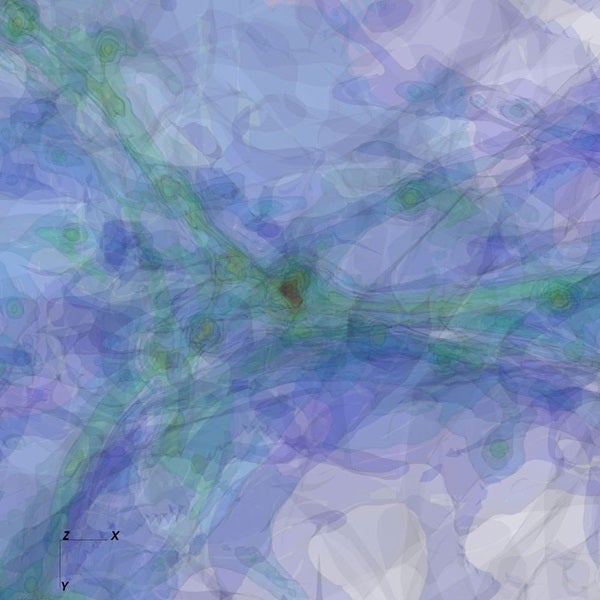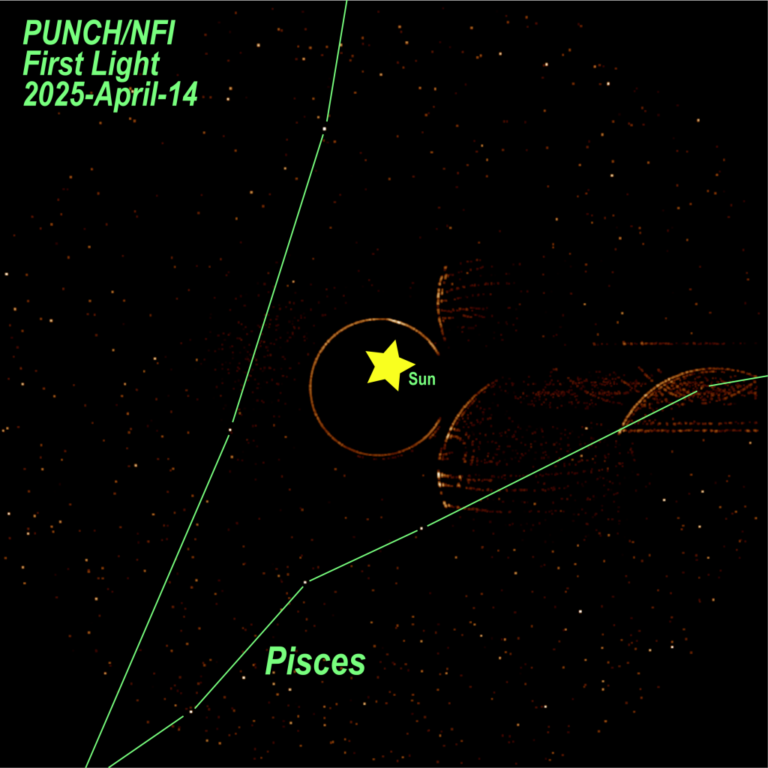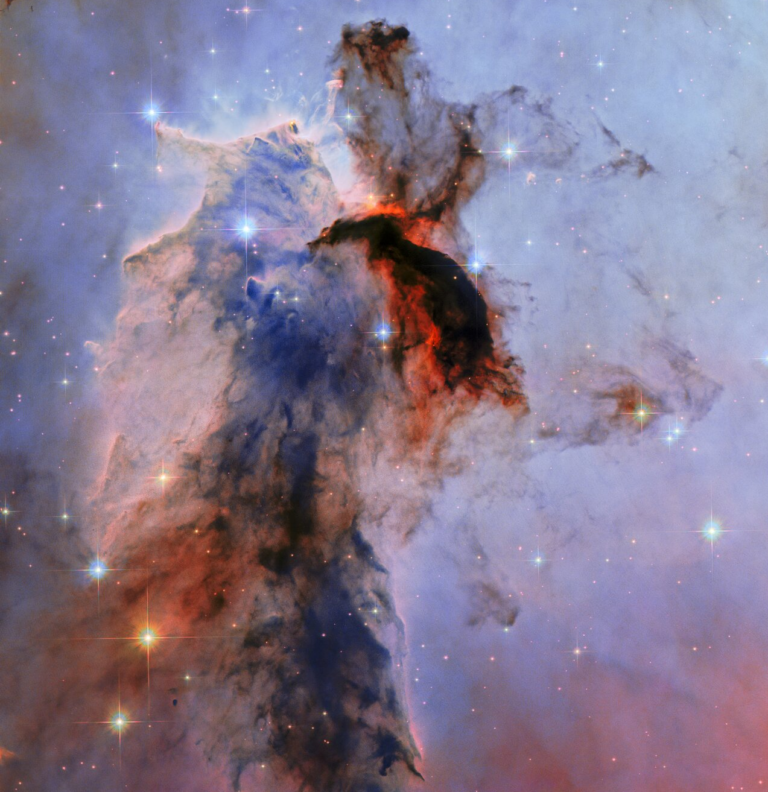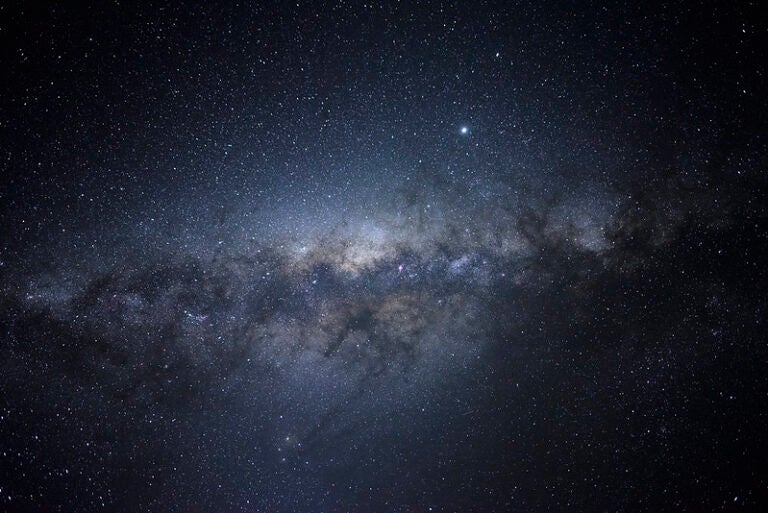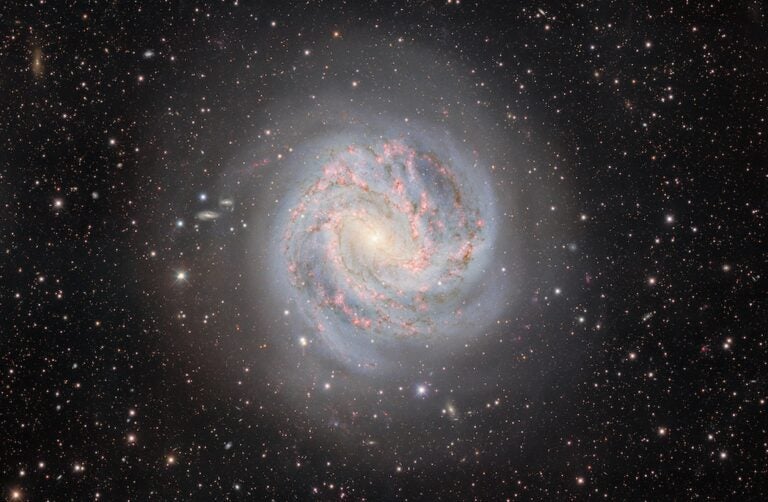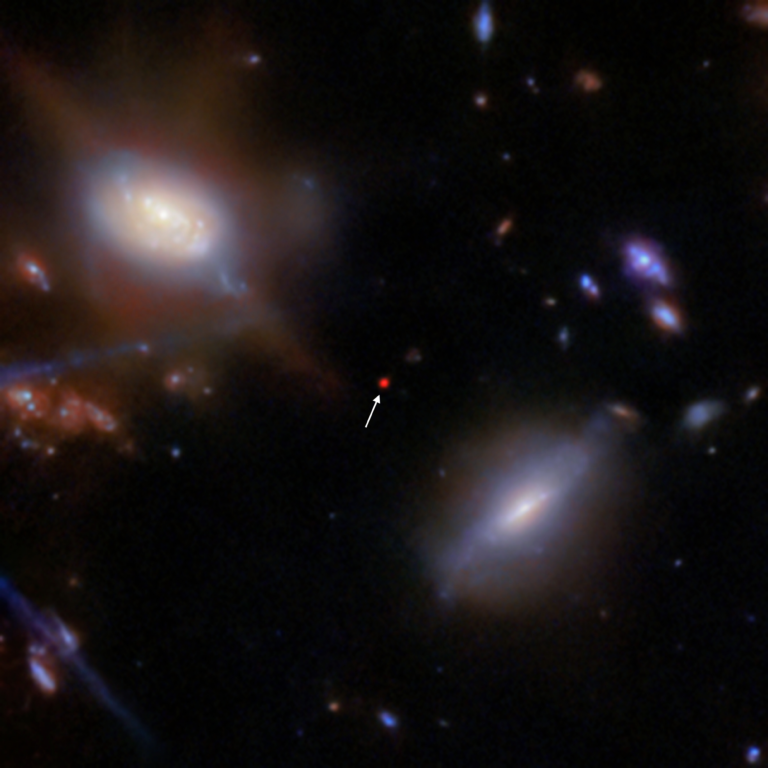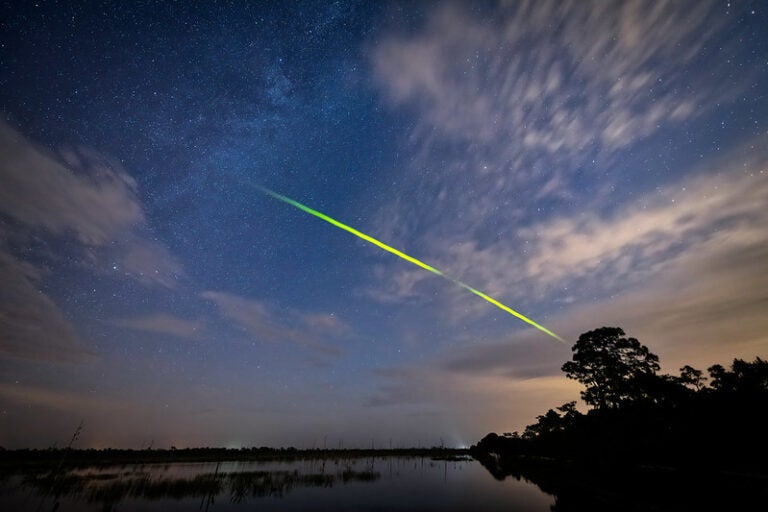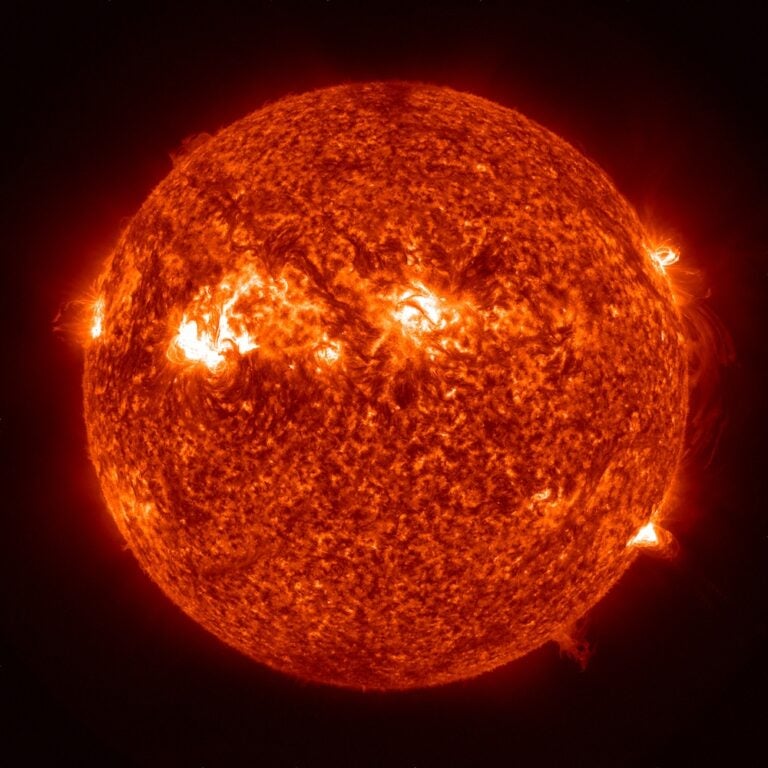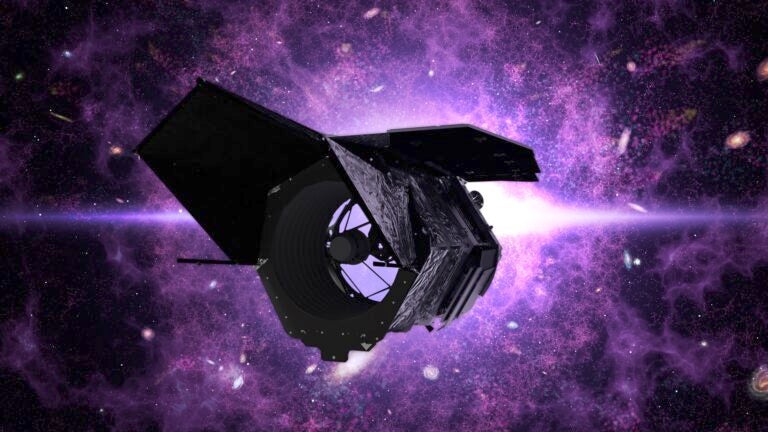With this approach, they can better analyze the formation of the first star, and zoom in multiple times — by a factor of between 2^25 and 2^34 in some of the simulations. This means they don’t have to spend computing power on regions where structures and stars are not forming. Additionally, they can choose where to zoom in during the course of a simulation.
A zoom-in sequence of one of the first star’s formation is shown in the following images. Colors correspond to different gas densities, forming contours of constant density. The highest density, and hottest temperature, is red in these images; the lowest density, and coolest temperature, is dark blue.

